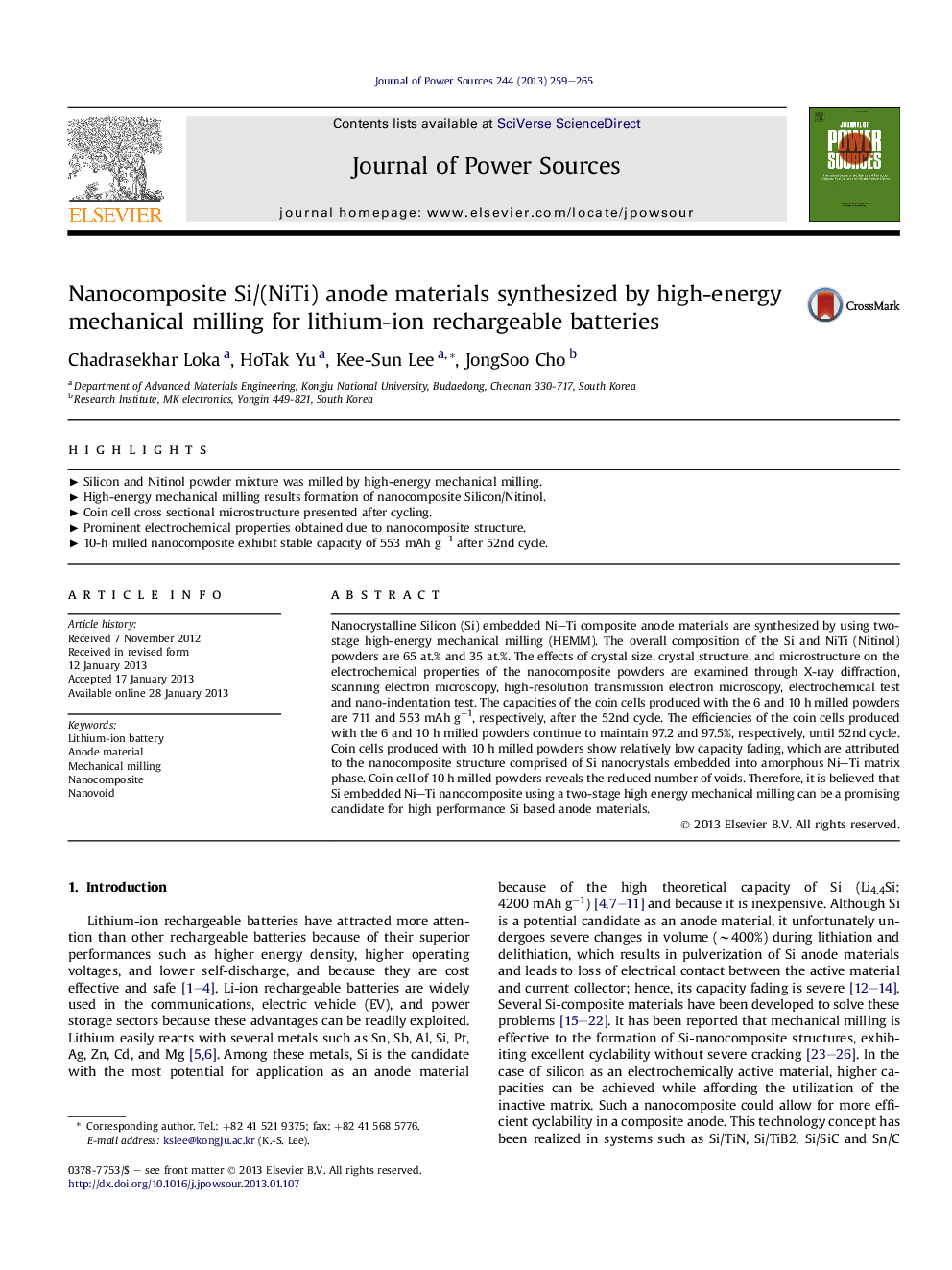| Article ID | Journal | Published Year | Pages | File Type |
|---|---|---|---|---|
| 1287471 | Journal of Power Sources | 2013 | 7 Pages |
Nanocrystalline Silicon (Si) embedded Ni–Ti composite anode materials are synthesized by using two-stage high-energy mechanical milling (HEMM). The overall composition of the Si and NiTi (Nitinol) powders are 65 at.% and 35 at.%. The effects of crystal size, crystal structure, and microstructure on the electrochemical properties of the nanocomposite powders are examined through X-ray diffraction, scanning electron microscopy, high-resolution transmission electron microscopy, electrochemical test and nano-indentation test. The capacities of the coin cells produced with the 6 and 10 h milled powders are 711 and 553 mAh g−1, respectively, after the 52nd cycle. The efficiencies of the coin cells produced with the 6 and 10 h milled powders continue to maintain 97.2 and 97.5%, respectively, until 52nd cycle. Coin cells produced with 10 h milled powders show relatively low capacity fading, which are attributed to the nanocomposite structure comprised of Si nanocrystals embedded into amorphous Ni–Ti matrix phase. Coin cell of 10 h milled powders reveals the reduced number of voids. Therefore, it is believed that Si embedded Ni–Ti nanocomposite using a two-stage high energy mechanical milling can be a promising candidate for high performance Si based anode materials.
► Silicon and Nitinol powder mixture was milled by high-energy mechanical milling. ► High-energy mechanical milling results formation of nanocomposite Silicon/Nitinol. ► Coin cell cross sectional microstructure presented after cycling. ► Prominent electrochemical properties obtained due to nanocomposite structure. ► 10-h milled nanocomposite exhibit stable capacity of 553 mAh g−1 after 52nd cycle.
